Saskatchewan Pool 4A
Image Gallery
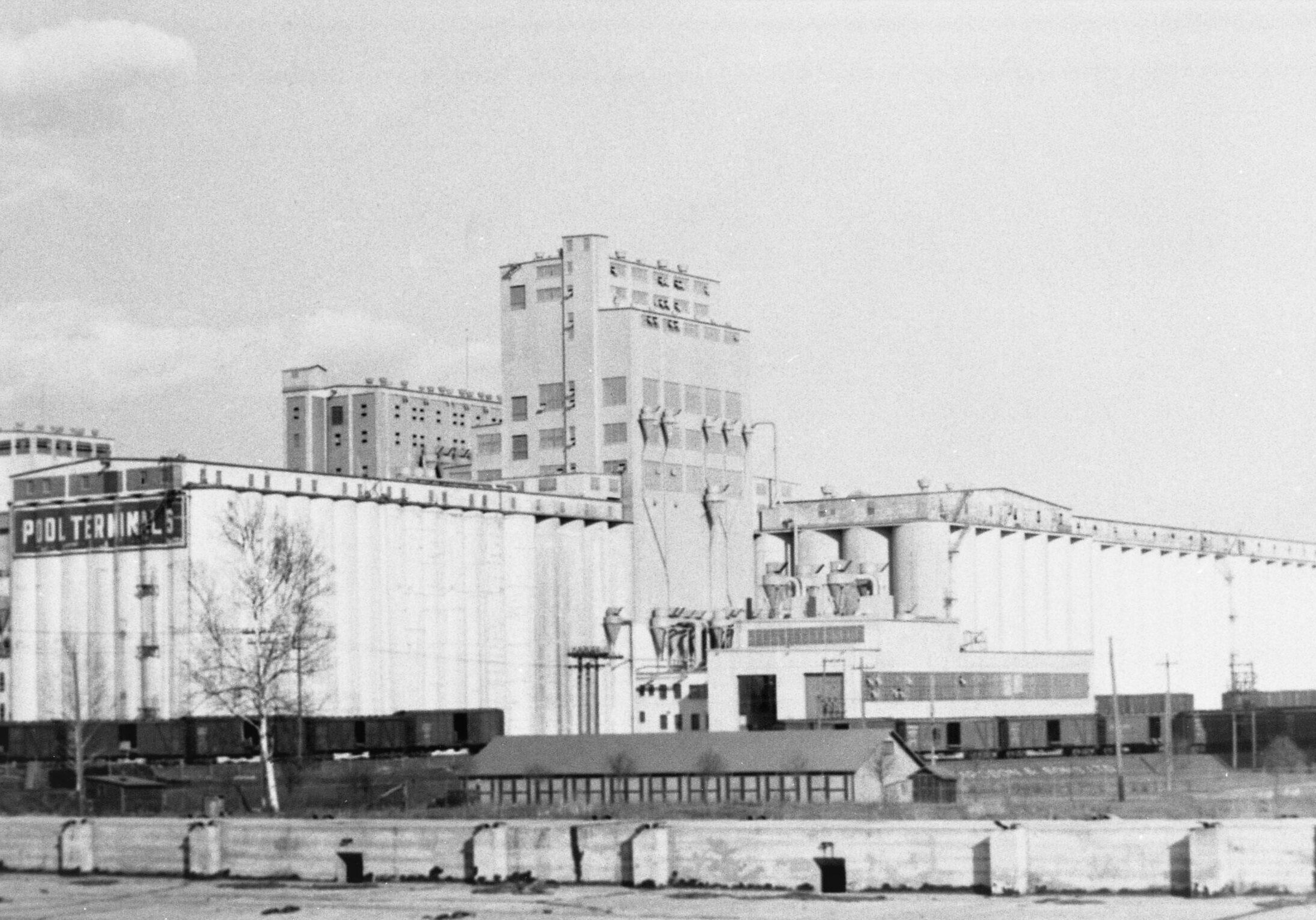
A view from land of Pool 4B with 4A's workhouse visible in the left-hand background.
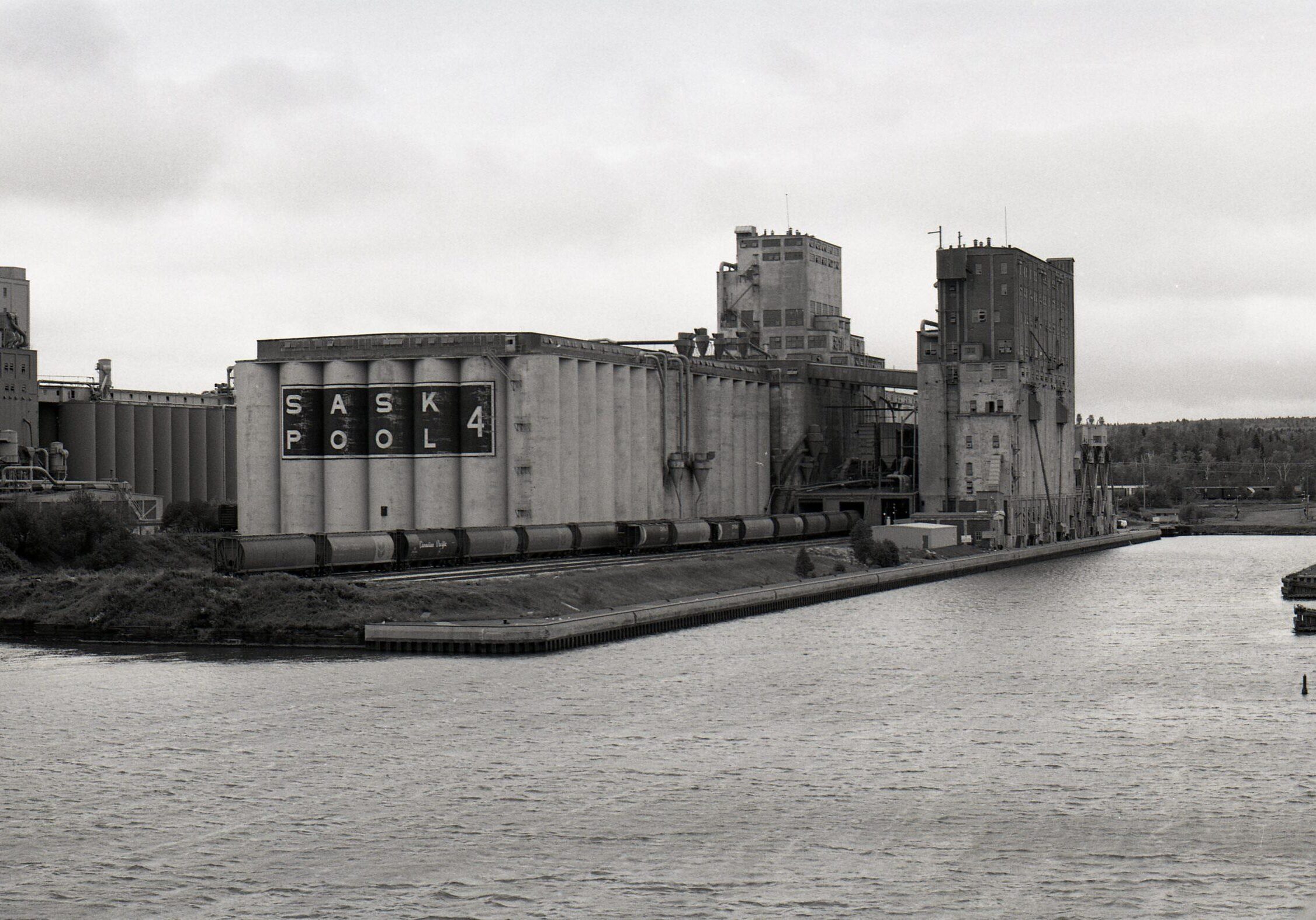
A view of Pool 4A taken from the water. 4B's workhouse is visible right behind 4A's annex, and Richardson Main is visible to the far left. Rail cars sit on the outshore tracks after being unloaded.
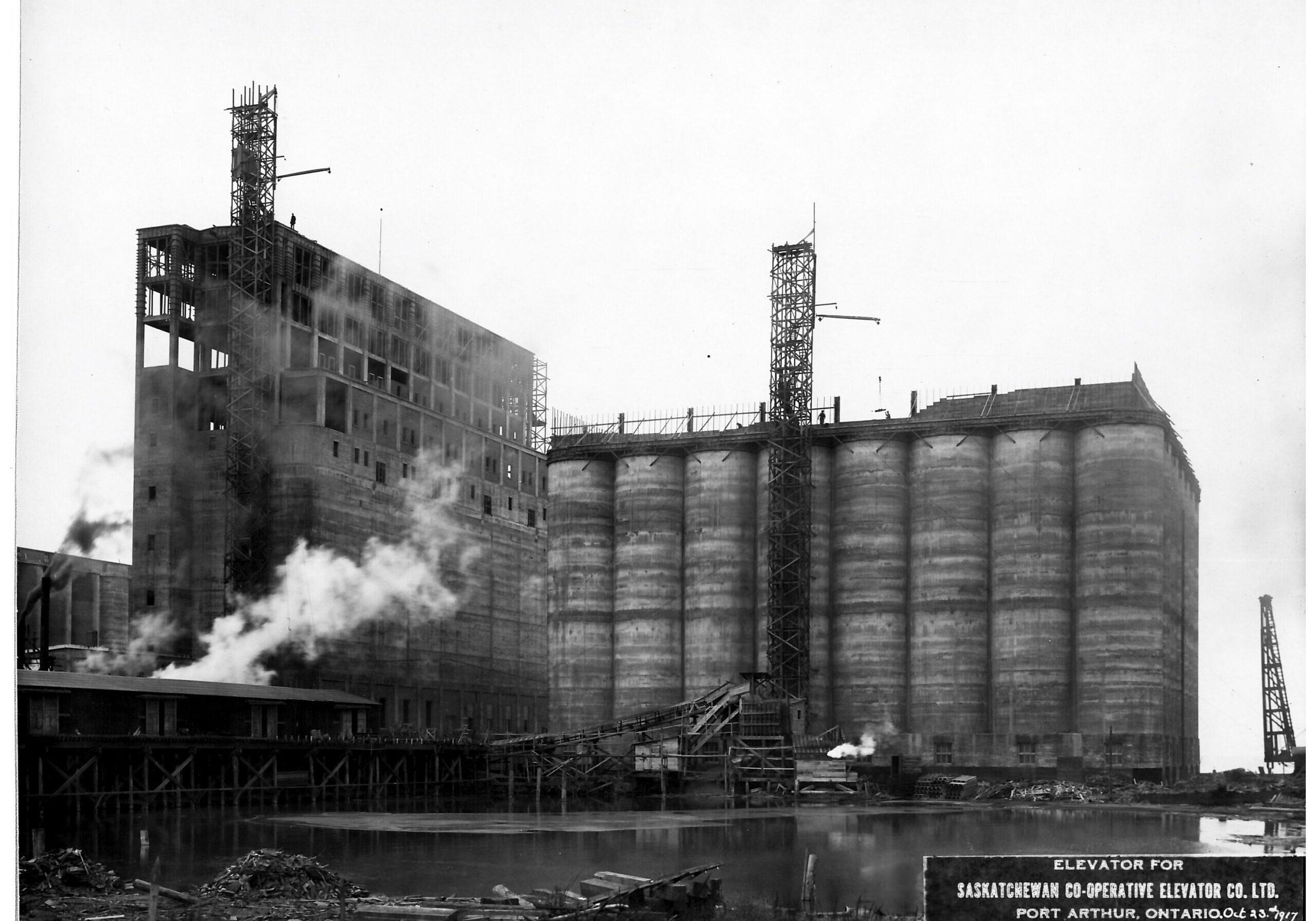
Pool 4A's workhouse and annex under construction.
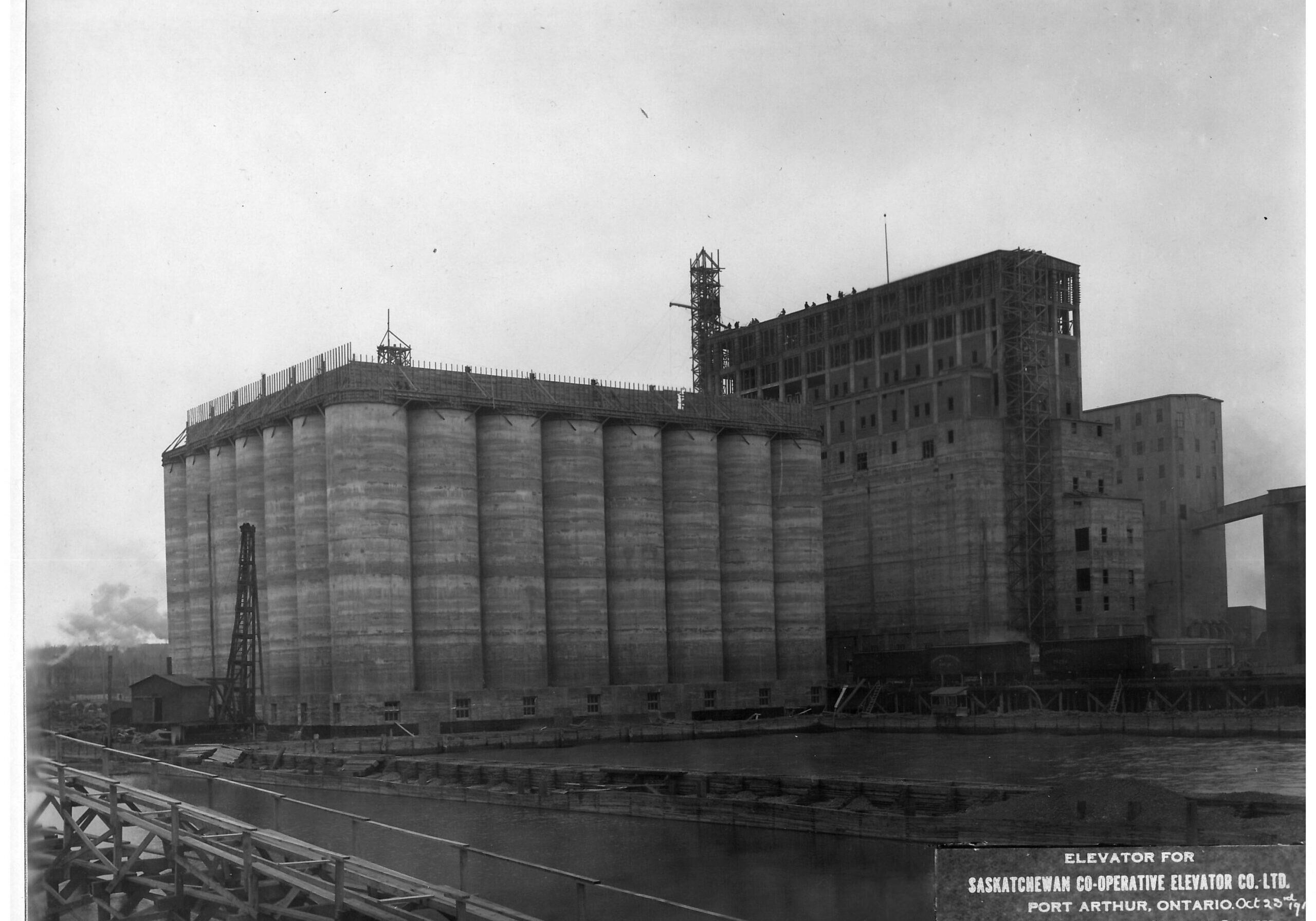
Pool 4A's workhouse and annex under construction. Photo taken looking towards land.

An aerial view of the foundations for Pool 4A. Like most elevators in the North End and Intercity, Pool 4A was on a water lot, requiring builders to drive piles for the foundation far into the lake.
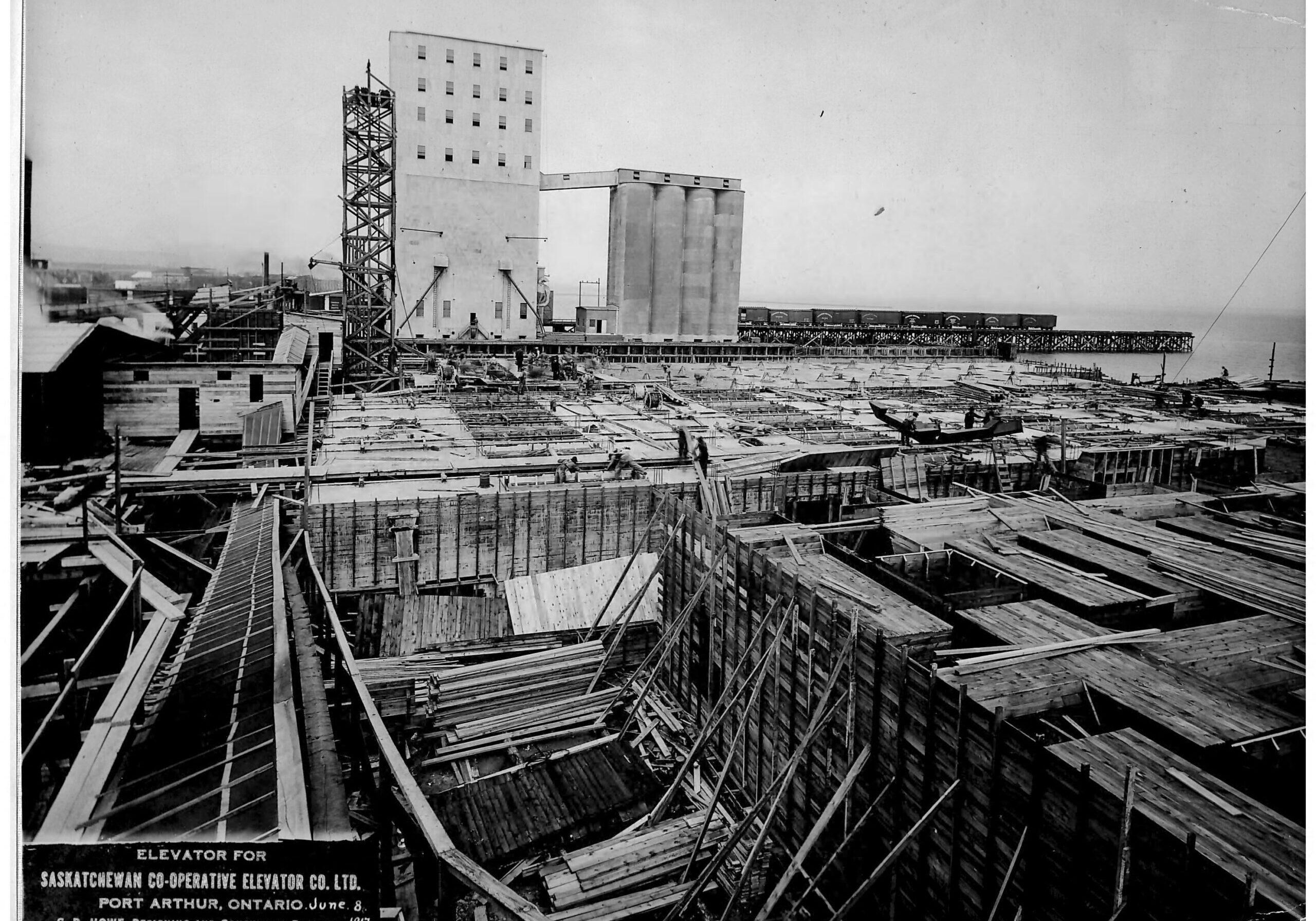
Early work on the Pool 4A annex, workhouse, and car shed. The early Union Terminal (Alberta Pool 9) stands in the background.
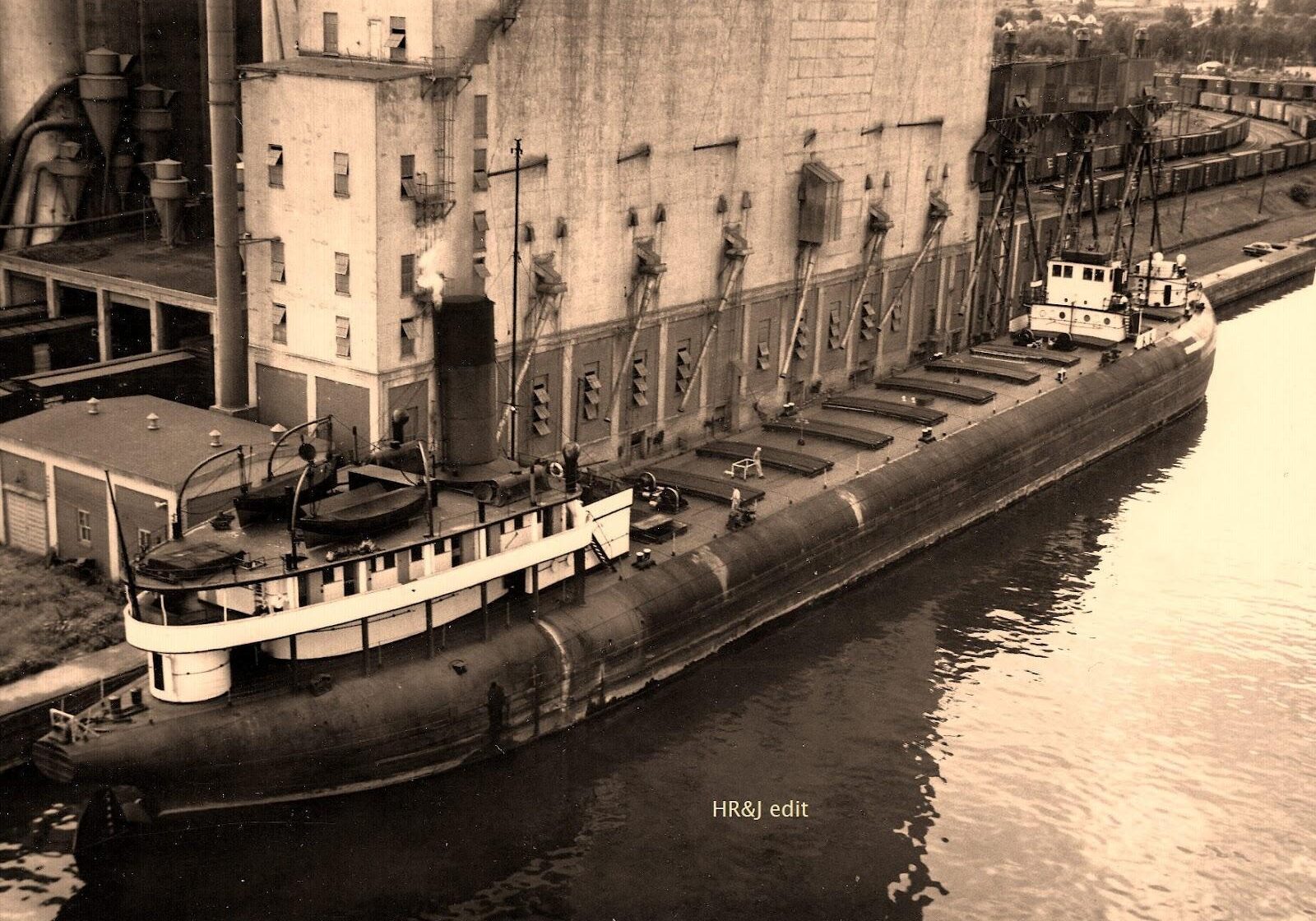
A detailed view of the loading side of Pool 4A's workhouse with a ship docked. A long line of boxcars entering the car shed is visible in the right-hand background.
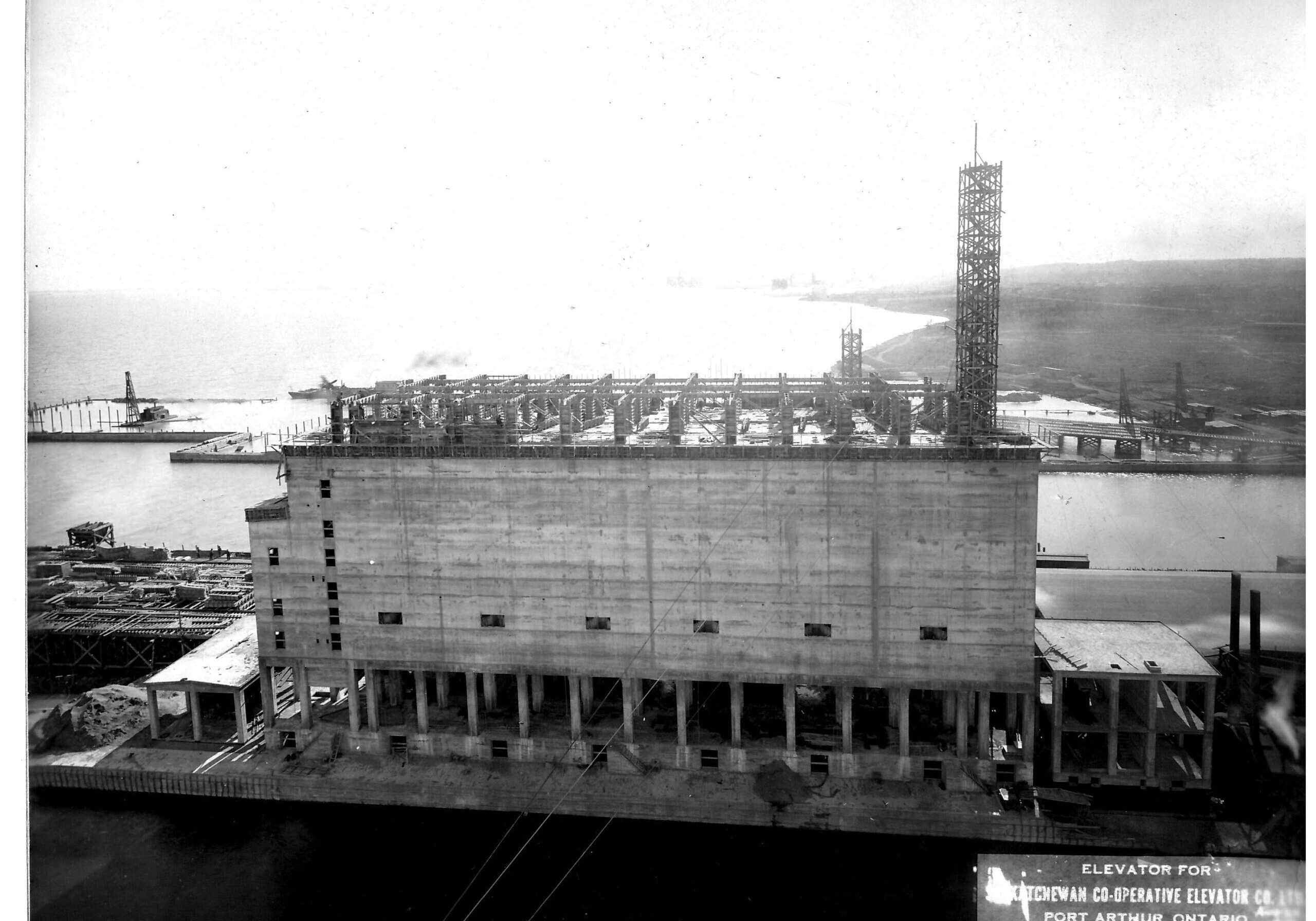
A side view of Pool 4A's workhouse under construction. The perimeter of Richardson Main's foundation is visible in behind.
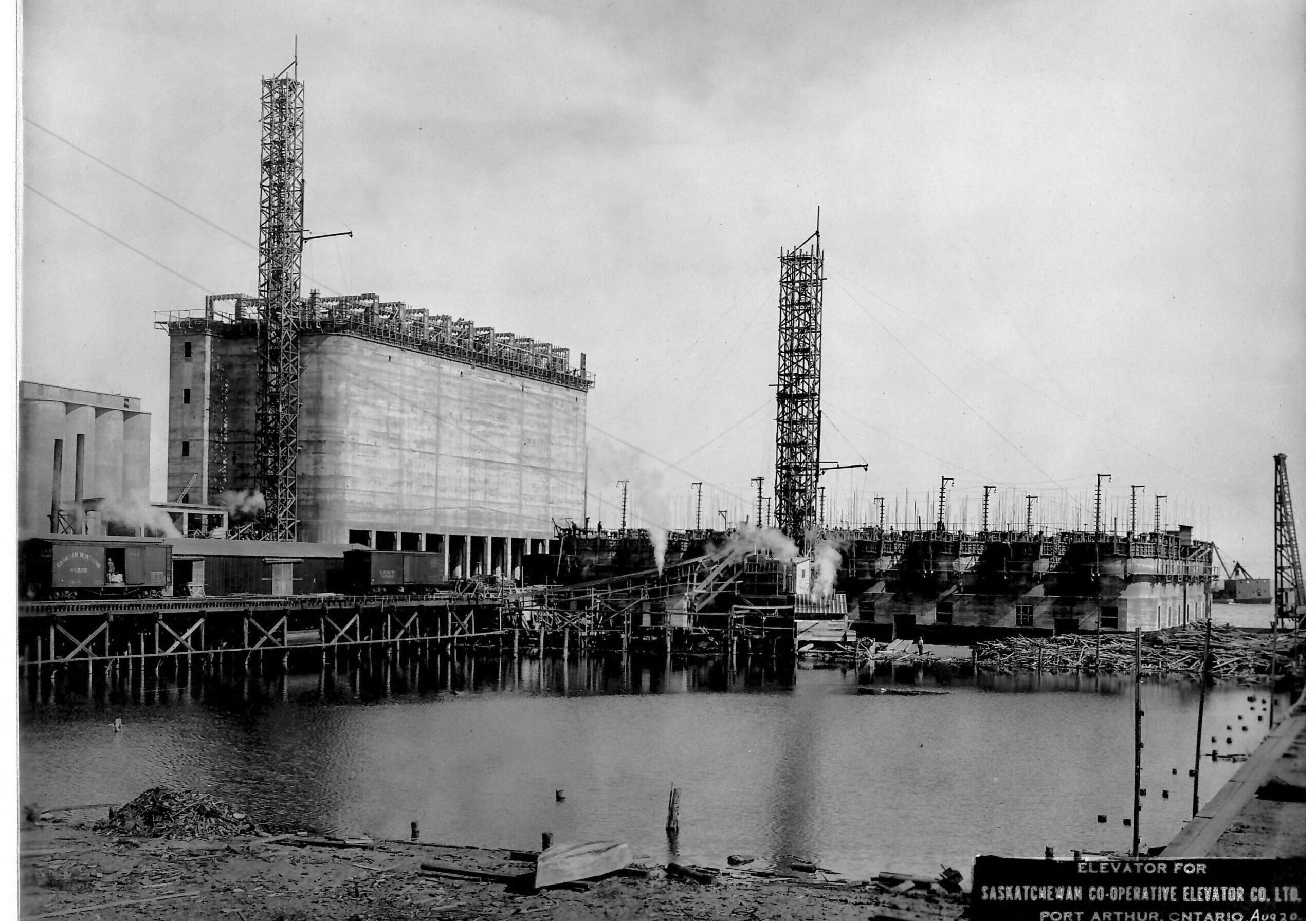
An early view of Pool 4A's workhouse and annex construction with a rail trestle in between. The bins for Union Terminal (Alberta Pool 9) are visible on the far left-hand side.
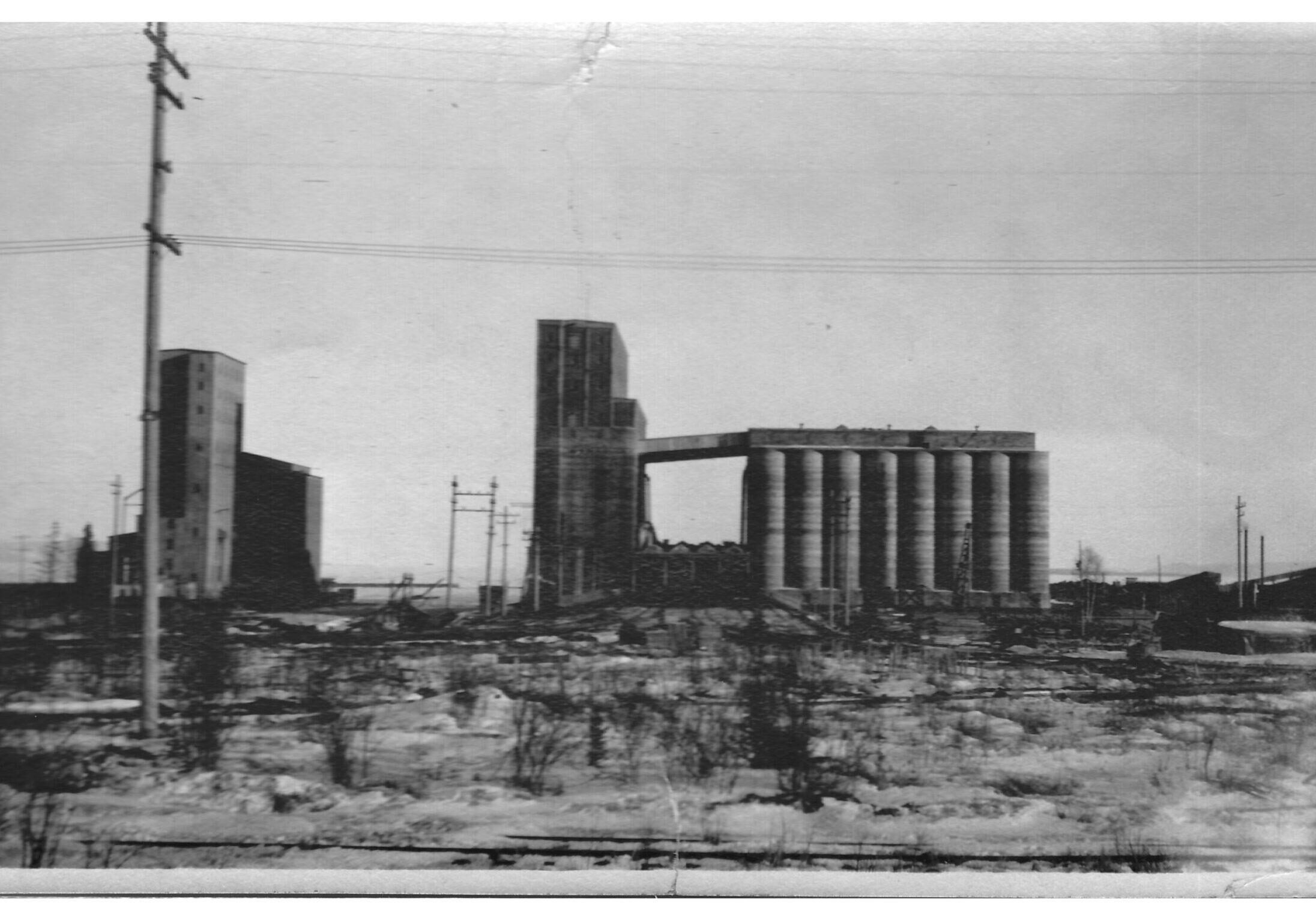
A wide view of the completed Pool 4A before 4B was built. This design--with the workhouse and annex side by side and the car shed running between--was a popular orientation for elevators at this time, inspired first by the Empire Elevator and Grand Trunk Pacific Elevator in the South End.
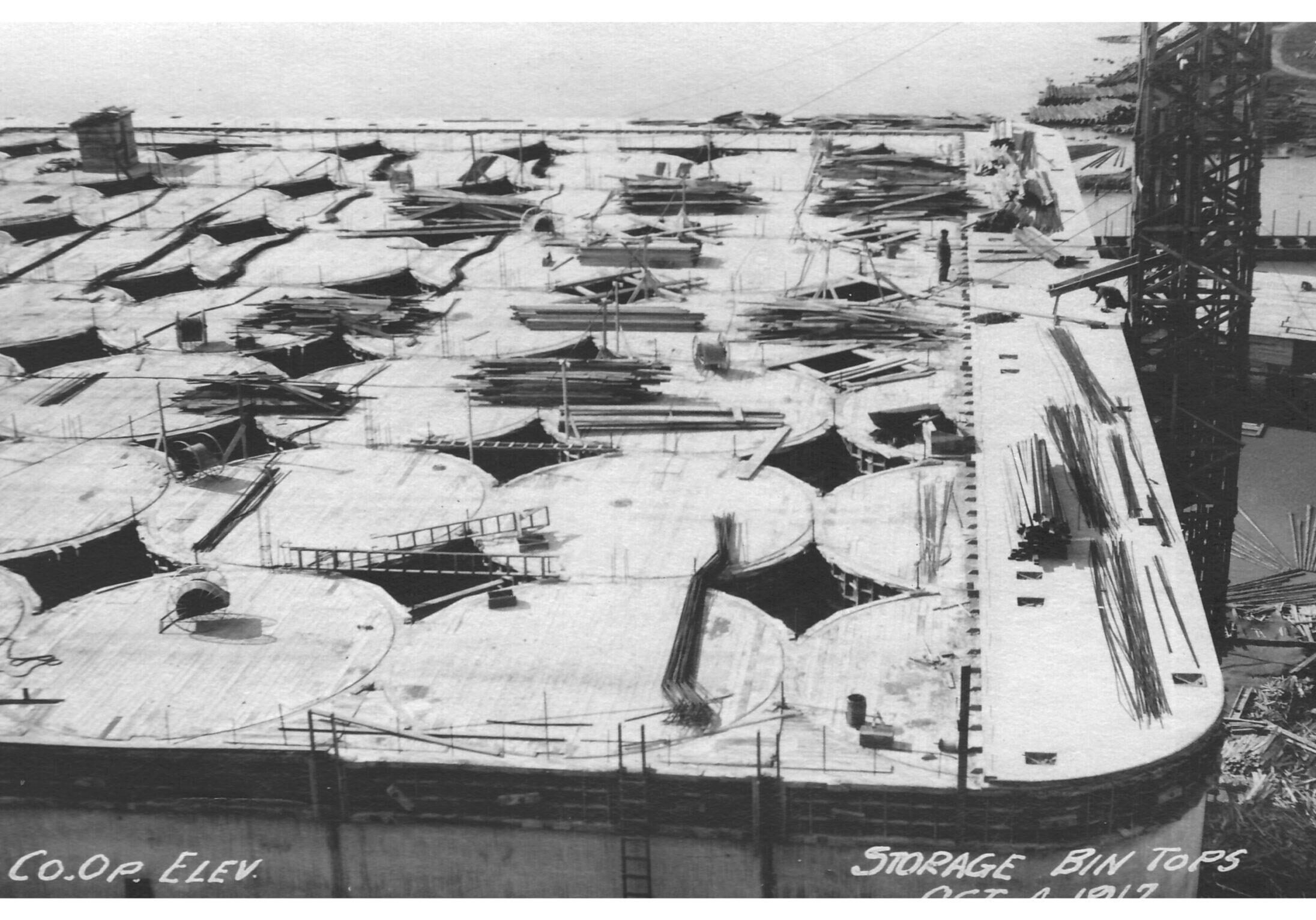
A view of the top of Pool 4A's storage bins, taken in October 1917. The main bins are the large circular silos, but the diamond-shaped interspace bins were also filled with grain to make full use of the space.
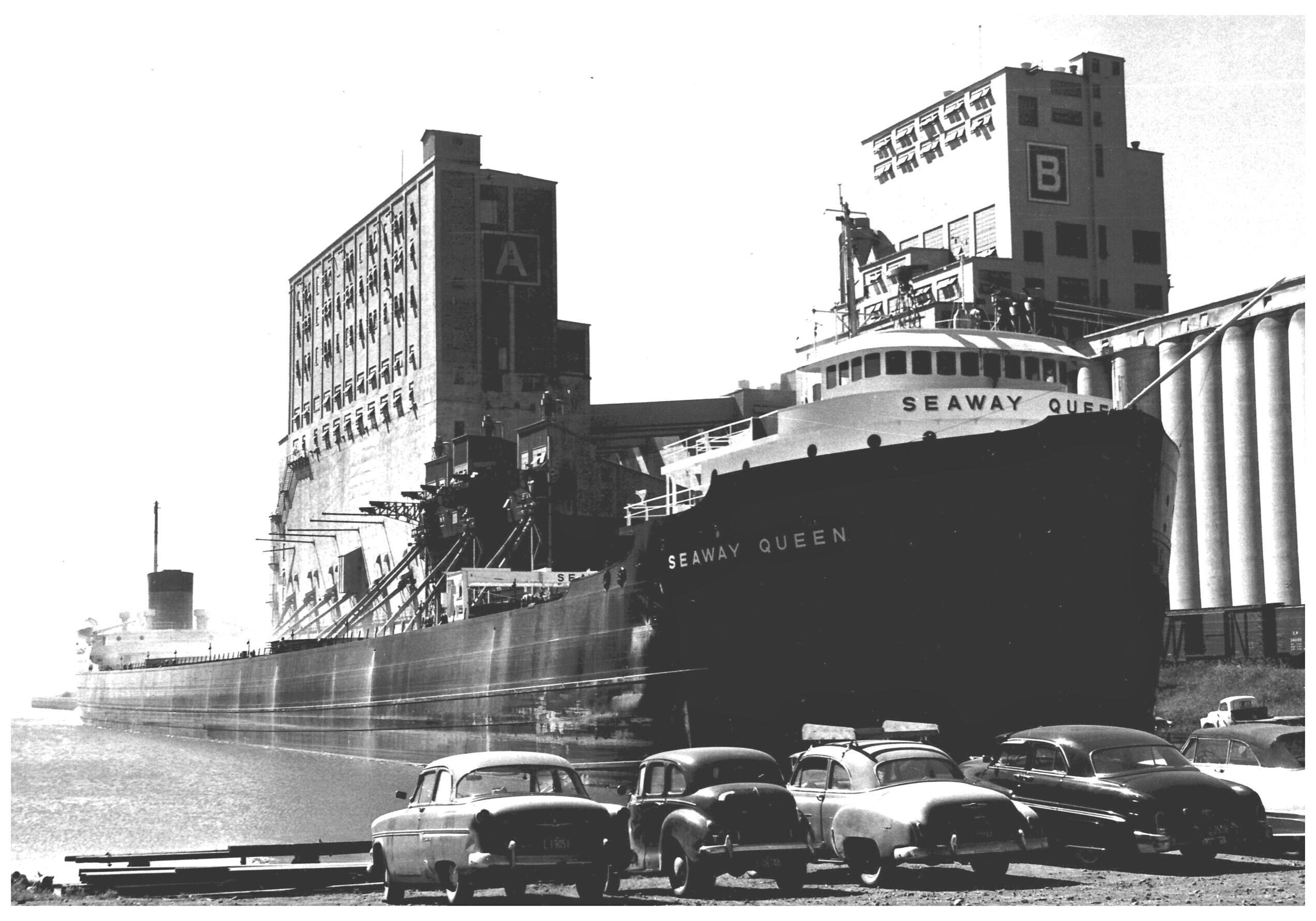
A view of the Pool 4A and 4B workhouses taken from the workers' parking lot. The Seaway Queen loads from 4A's workhouse.

A photo of Pool 4A's workhouse under construction, taken October 3, 1917. The main structure of the annex bins is all but complete.
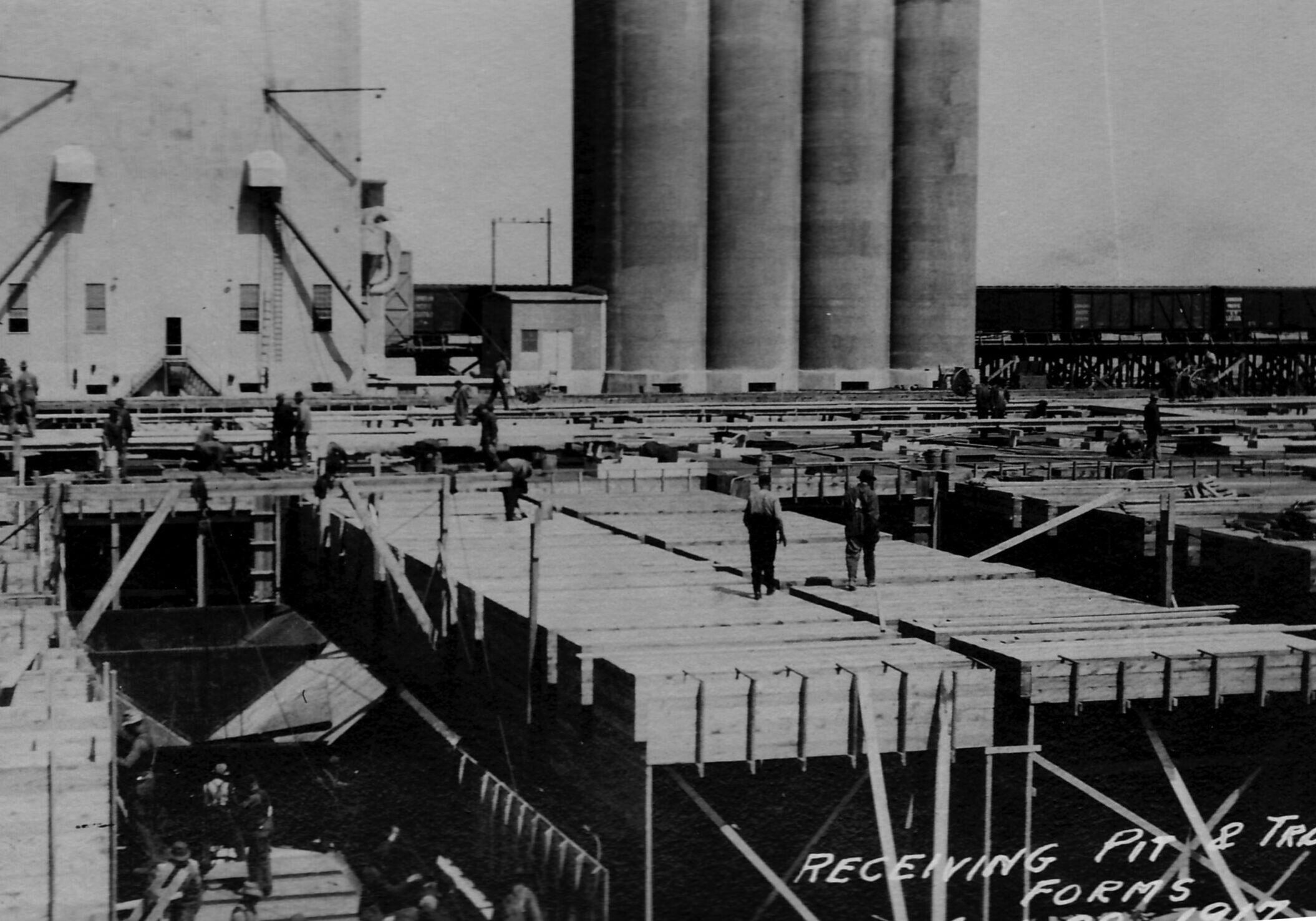
A photo looking into Pool 4A's basement receiving pits, taken in early 1917. Union Terminal (Alberta Pool 9) stands in the background.
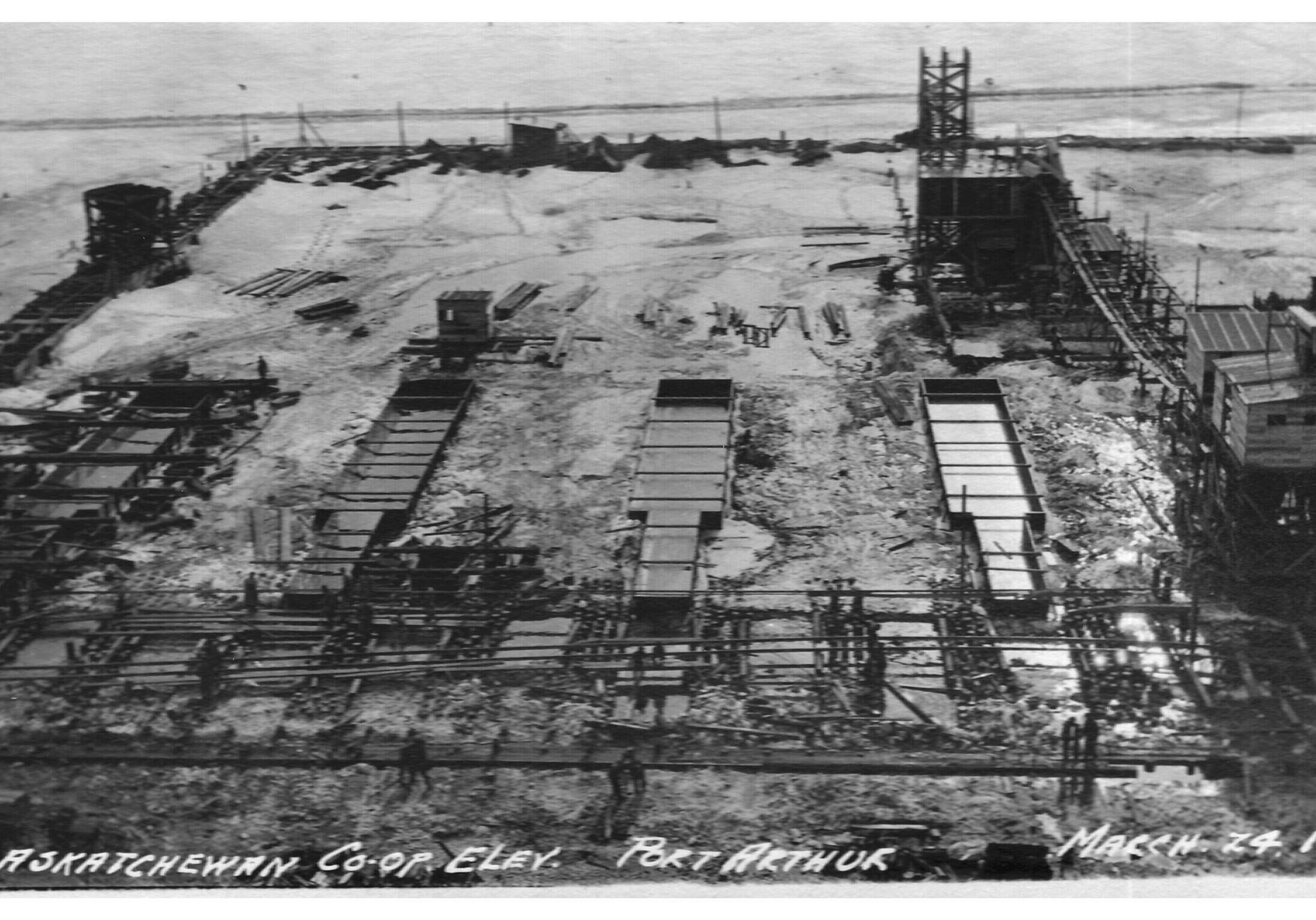
A photo of the very early stages of Pool 4A's foundation construction.

Two dredges on Lake Superior, taken August 24, 1916. Dredges helped clear the elevator water lots and made sure the slips were deep enough for comfortable docking and loading.
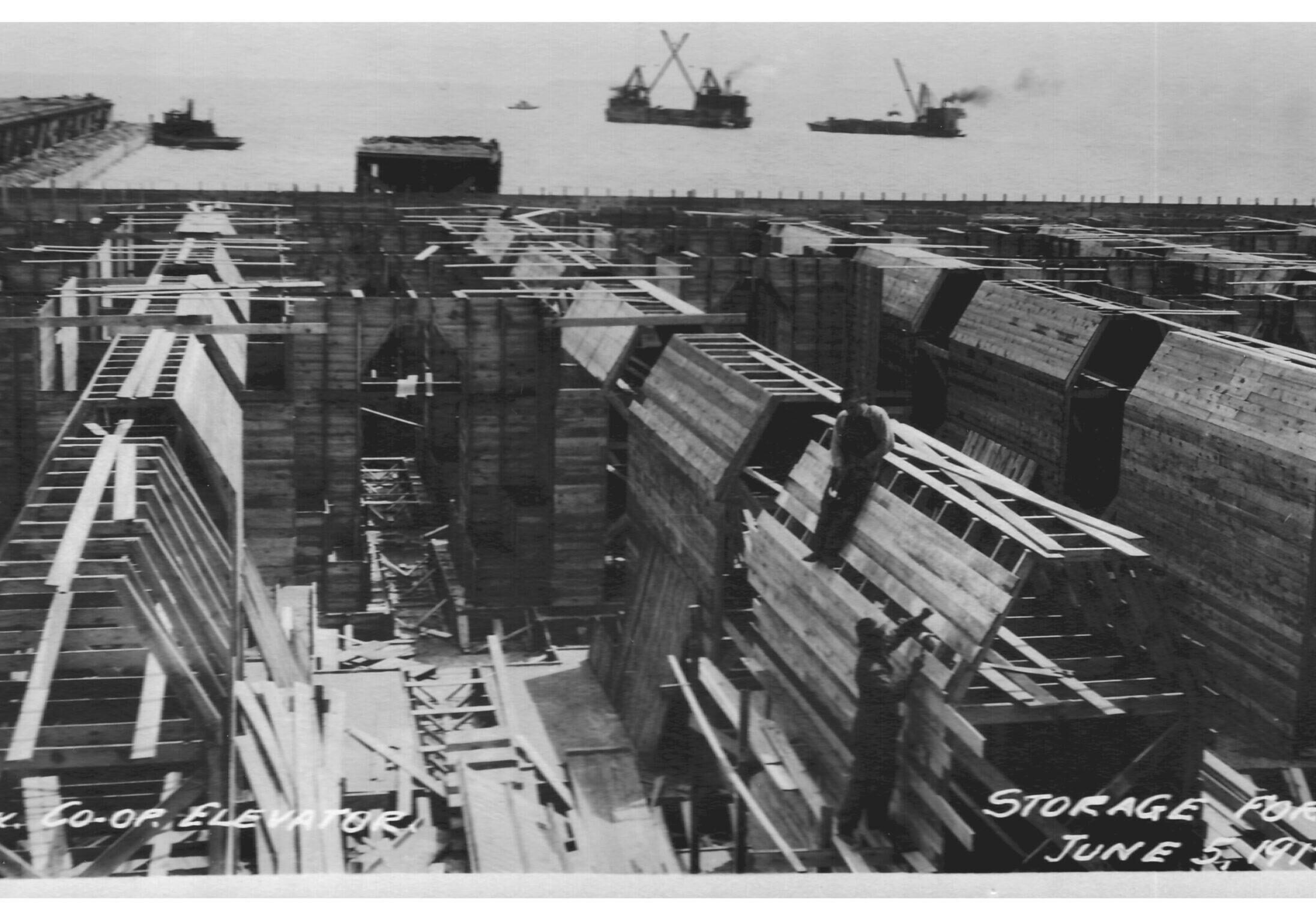
A bottom view of Pool 4A's various storage areas, taken June 5, 1917. Dredges can be seen at work on the Lake Superior harbour in the background.
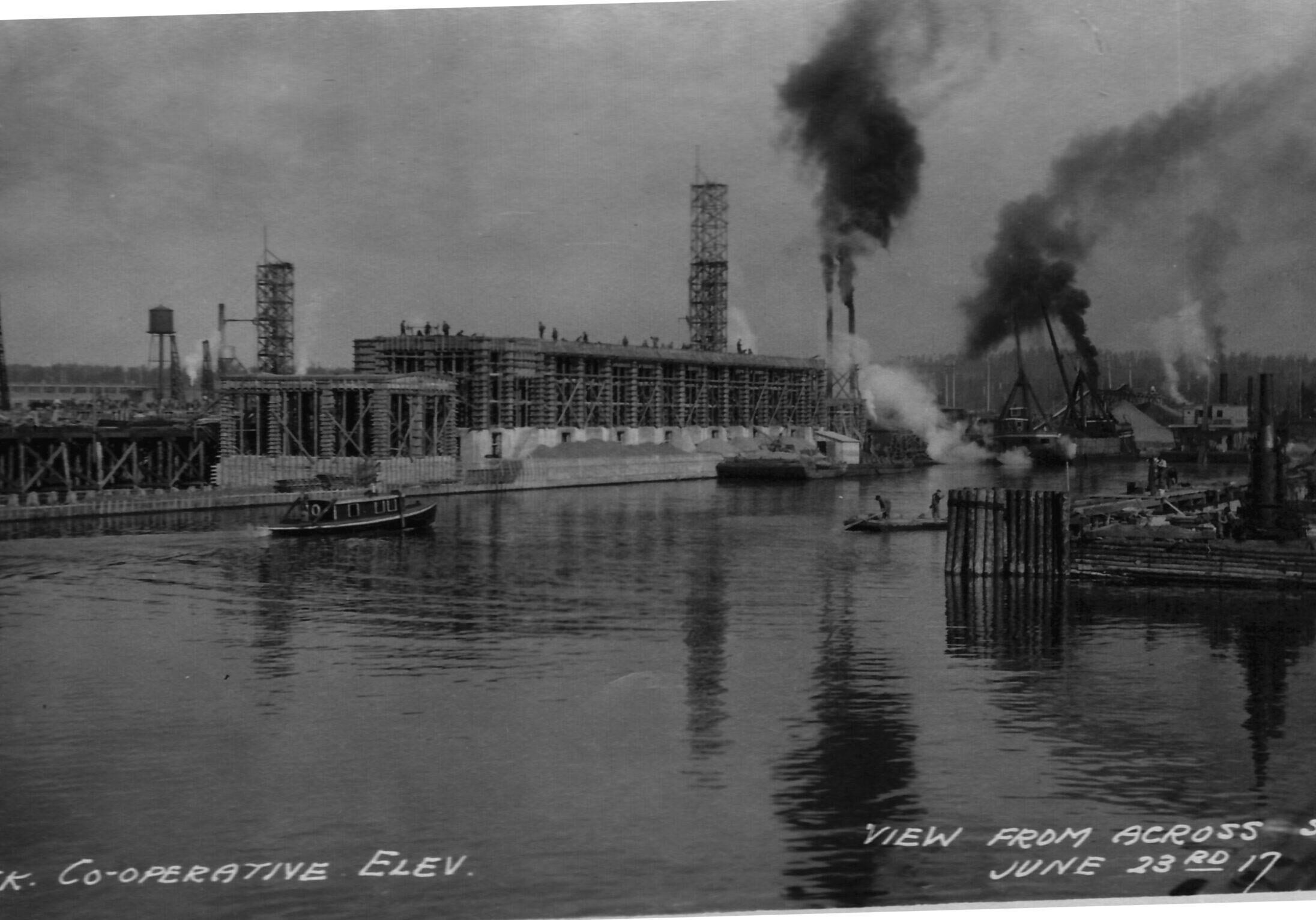
A view of Pool 4A's early construction. Photo taken from out on the water looking inland on June 23, 1917.
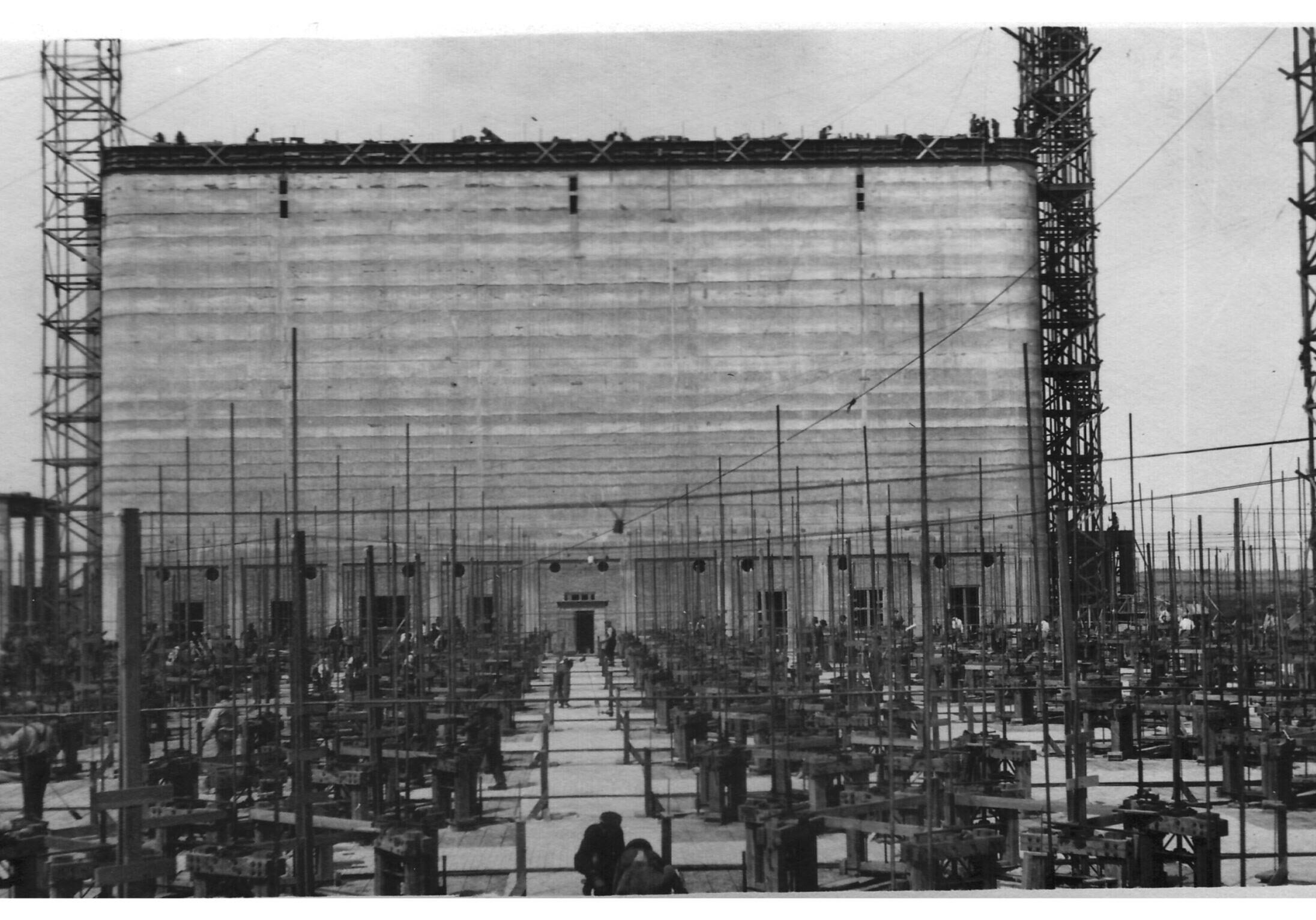
A view of Pool 4A's construction from within the annex area looking towards the workhouse. The slip forms for the concrete silos line the annex area in rows.
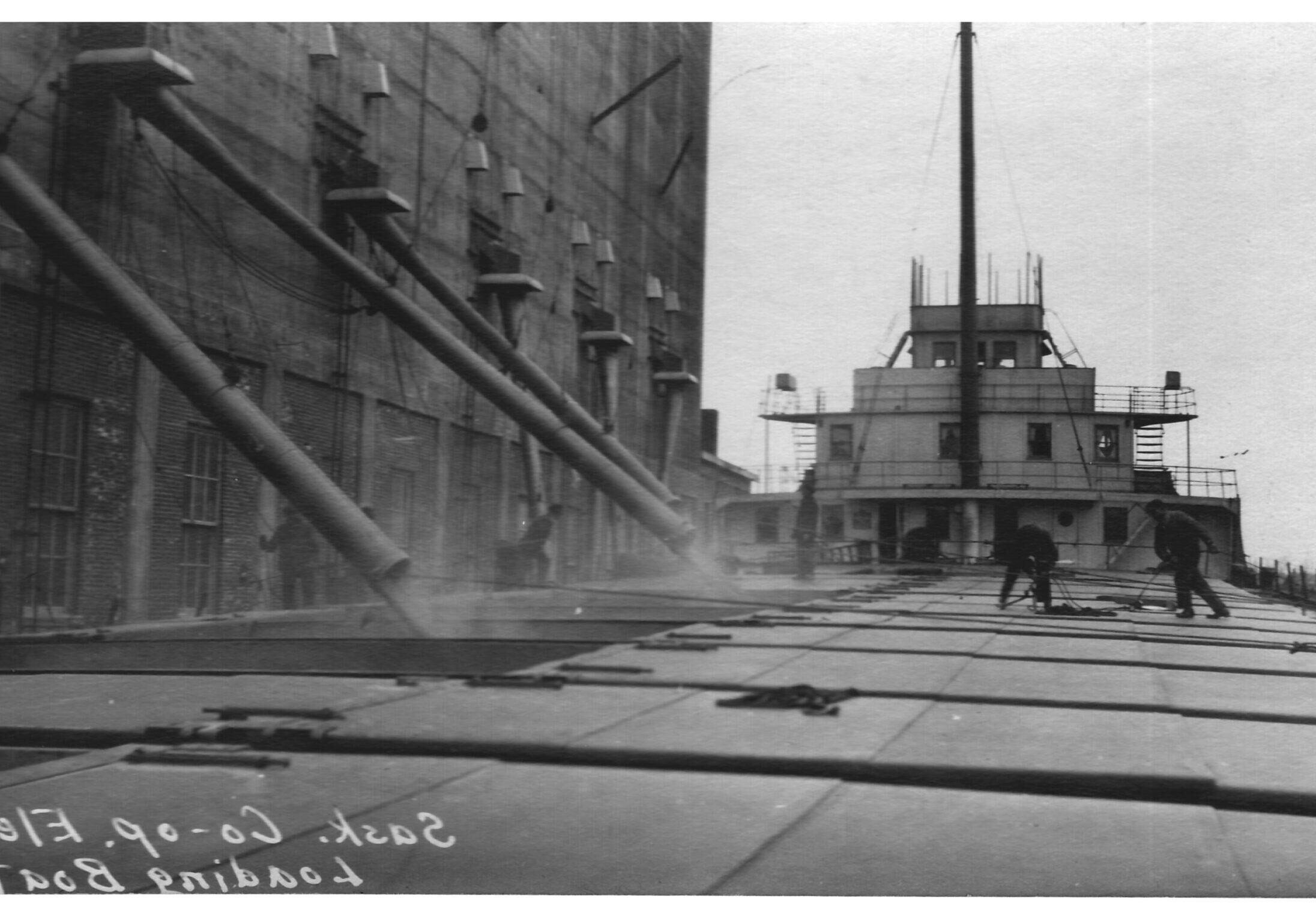
A fascinating view of a ship loading at Pool 4A, taken atop one of the ship's closed holds.
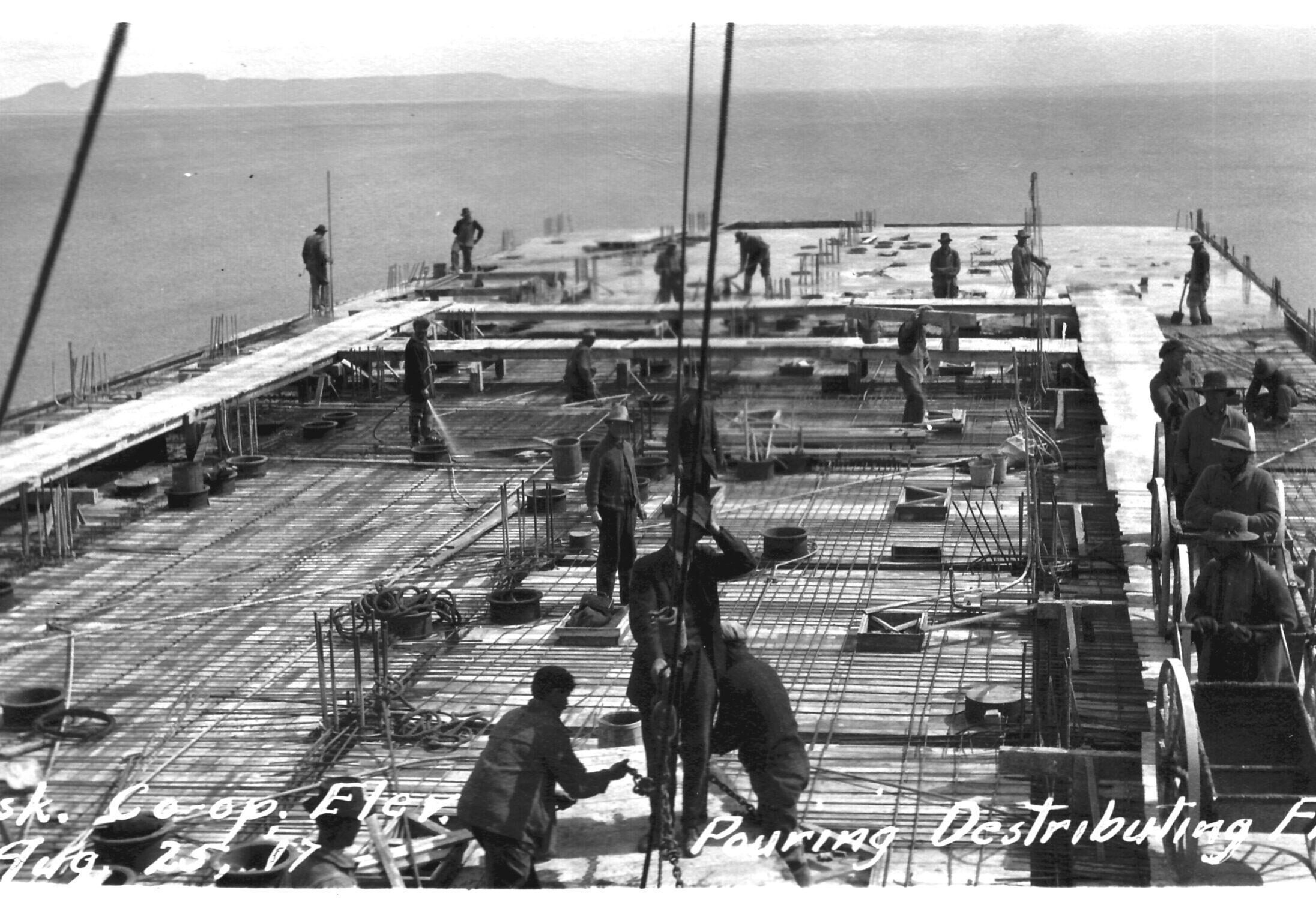
A photo capturing the pouring of the distributing floor, taken August 25, 1917. Workers on the right-hand side line up on temporary catwalks with wheelbarrows of concrete.
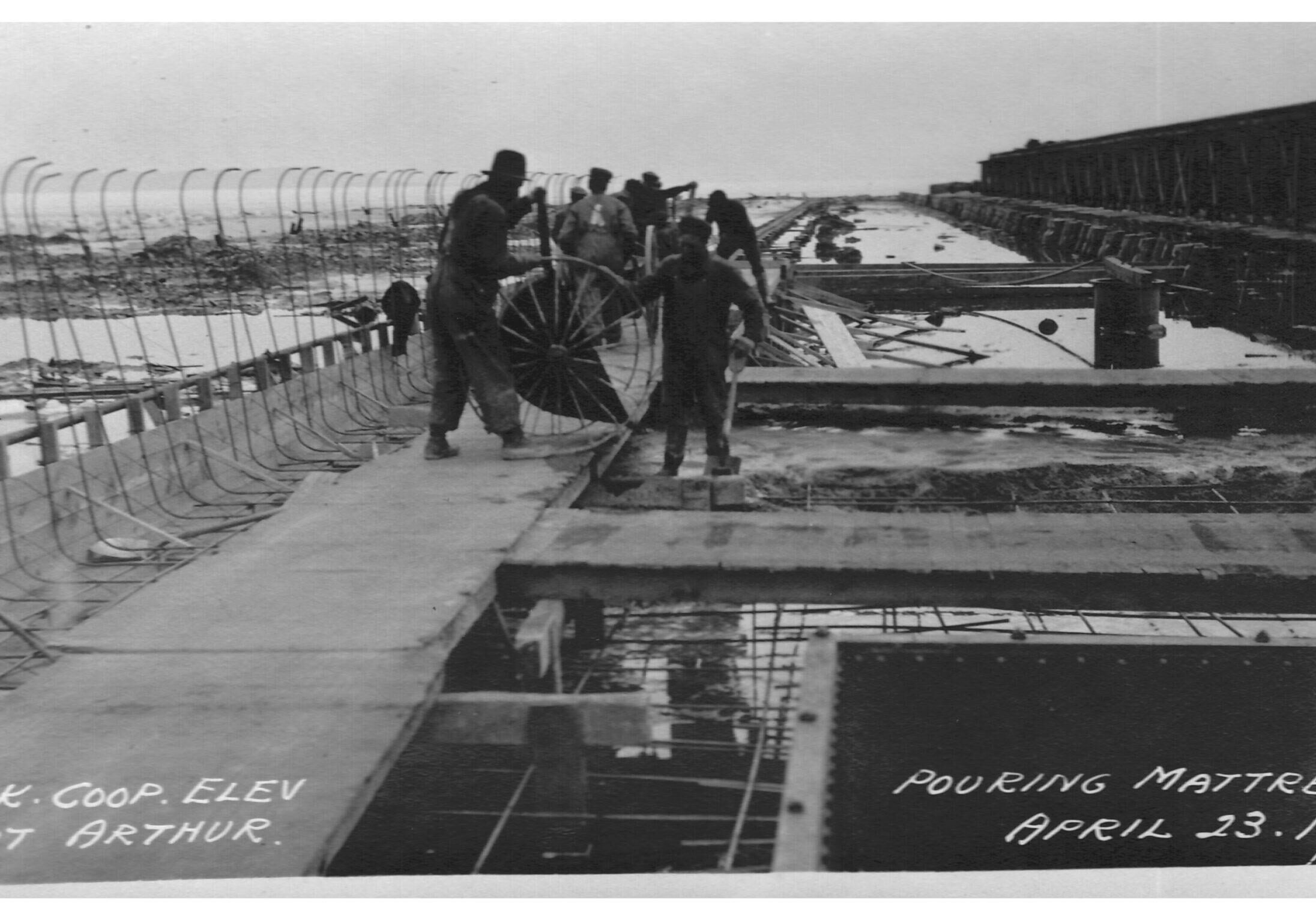
Using a wheelbarrow, workers pour concrete for Pool 4A's mattress foundation. Photo taken April 23, 1917.
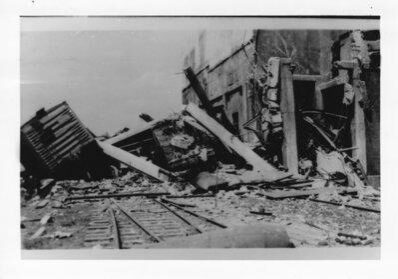
Ground wreckage from the 1952 dust explosion in Pool 4A's workhouse. This second dust explosion in the span of 8 years prompted real consideration for dust control measures across the waterfront.
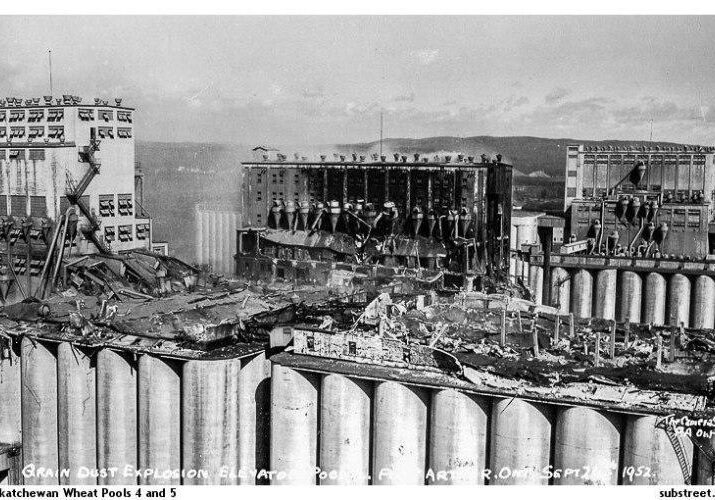
View of the damaged Pool 4A after the 1952 explosion. The blast extended out from the workhouse, also the nearby annex floor above the bins.
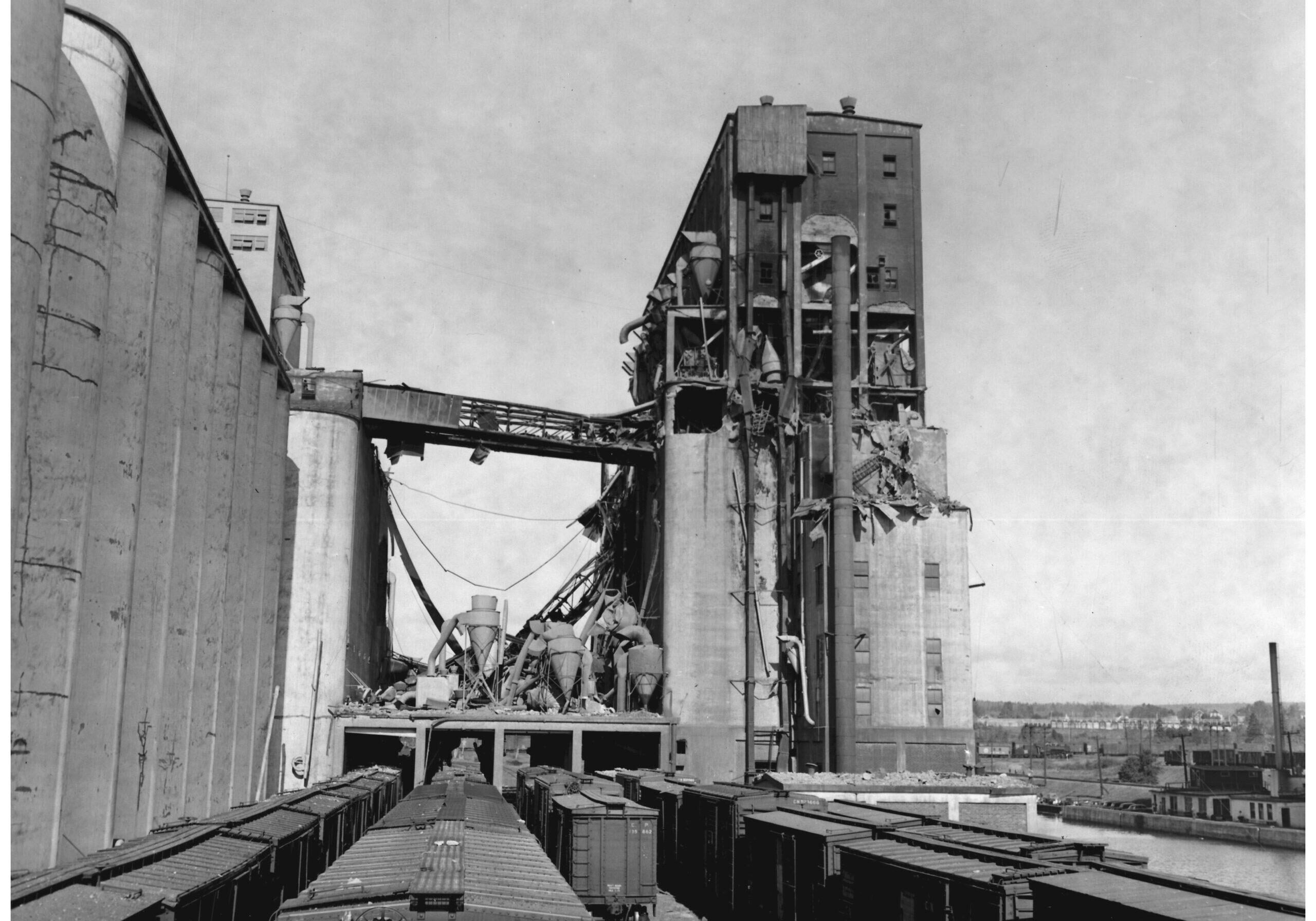
A view of the 1952 explosion wreckage between the workhouse and annex. A pile of rubble and machinery can be seen forming atop the car shed.
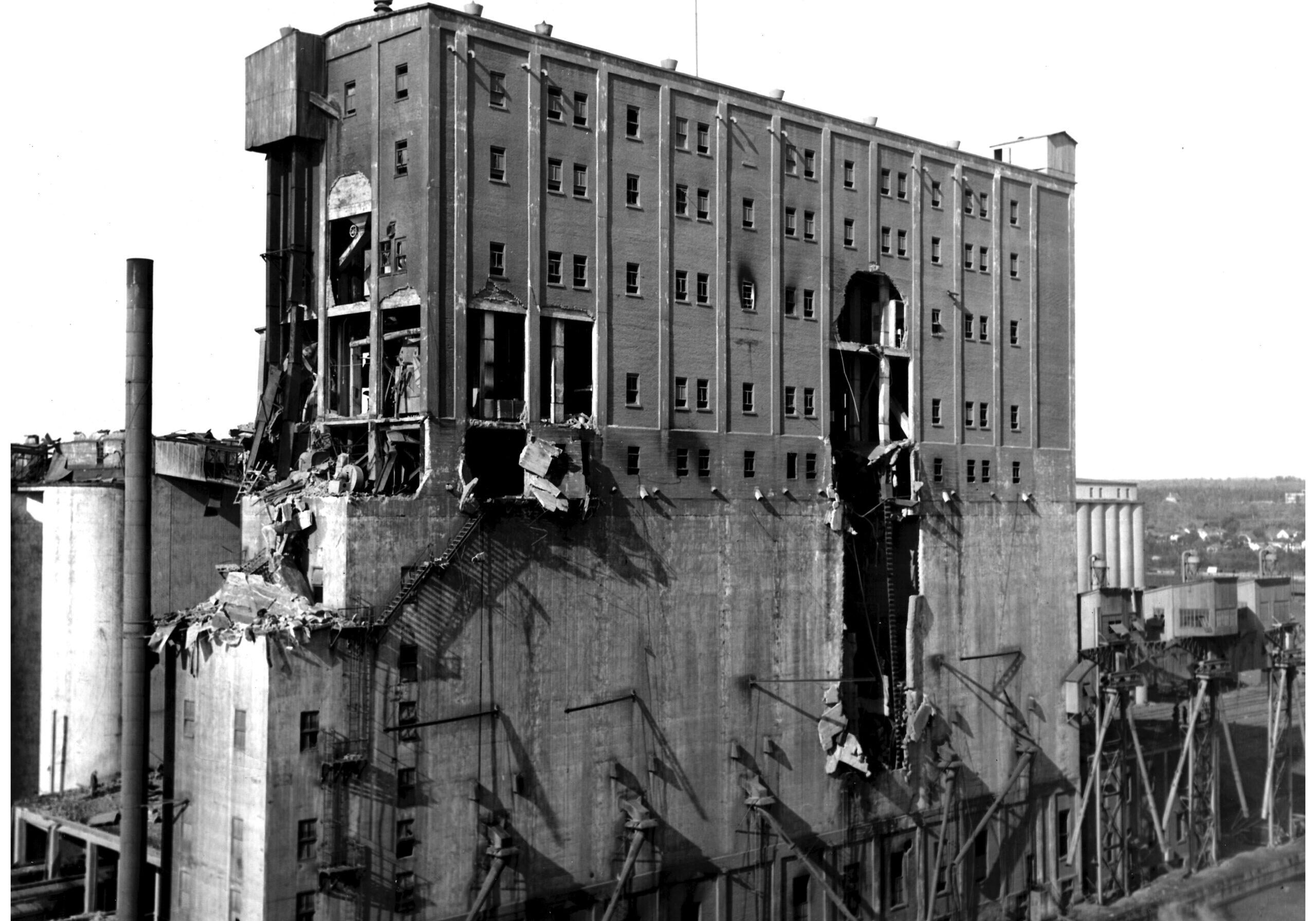
The blast from the 1952 dust explosion blew these holes in the Pool 4A workhouse. Six lives were lost.
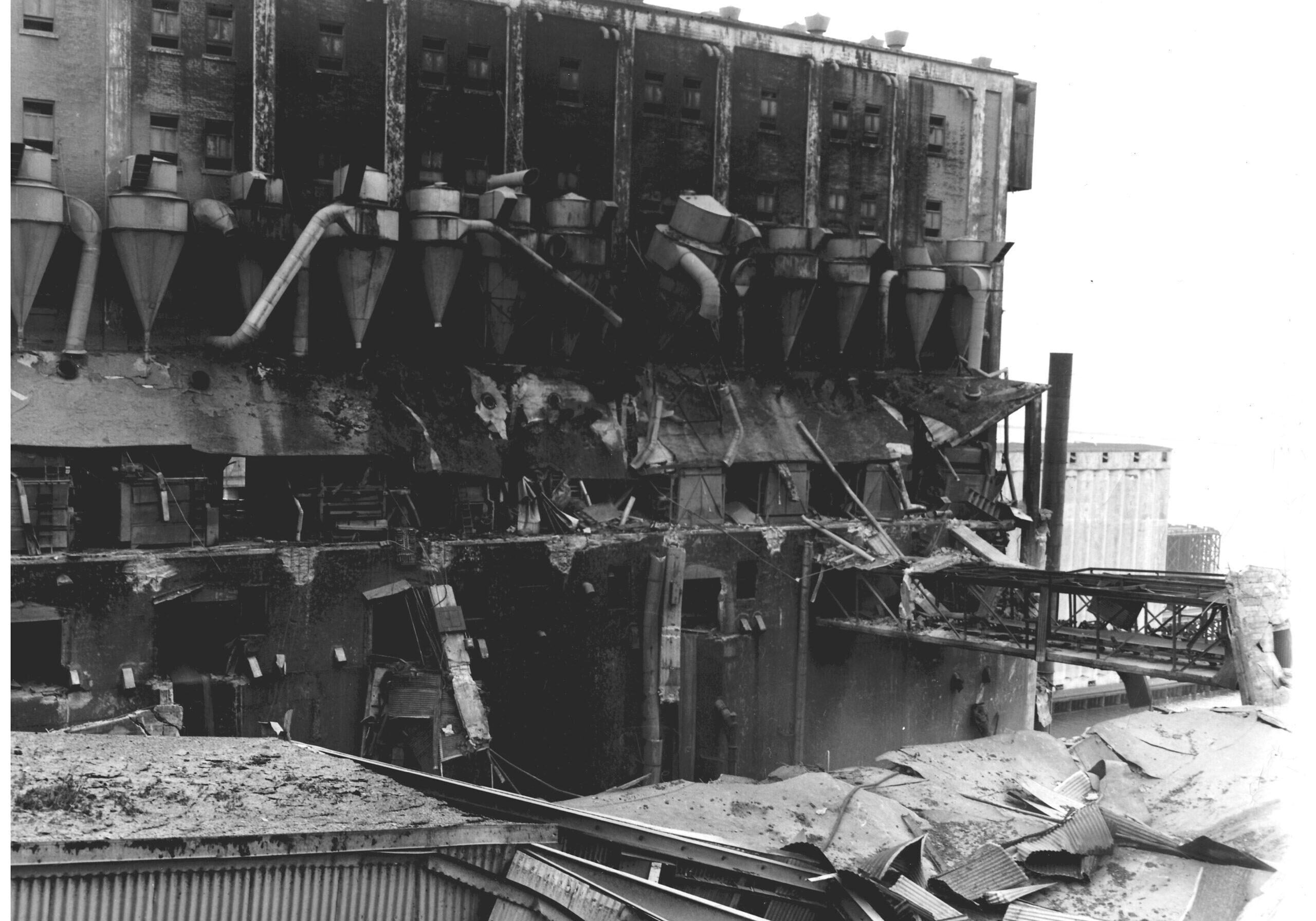
A close up of the wreckage on the Pool 4A workhouse and annex floor after the 1952 explosion.
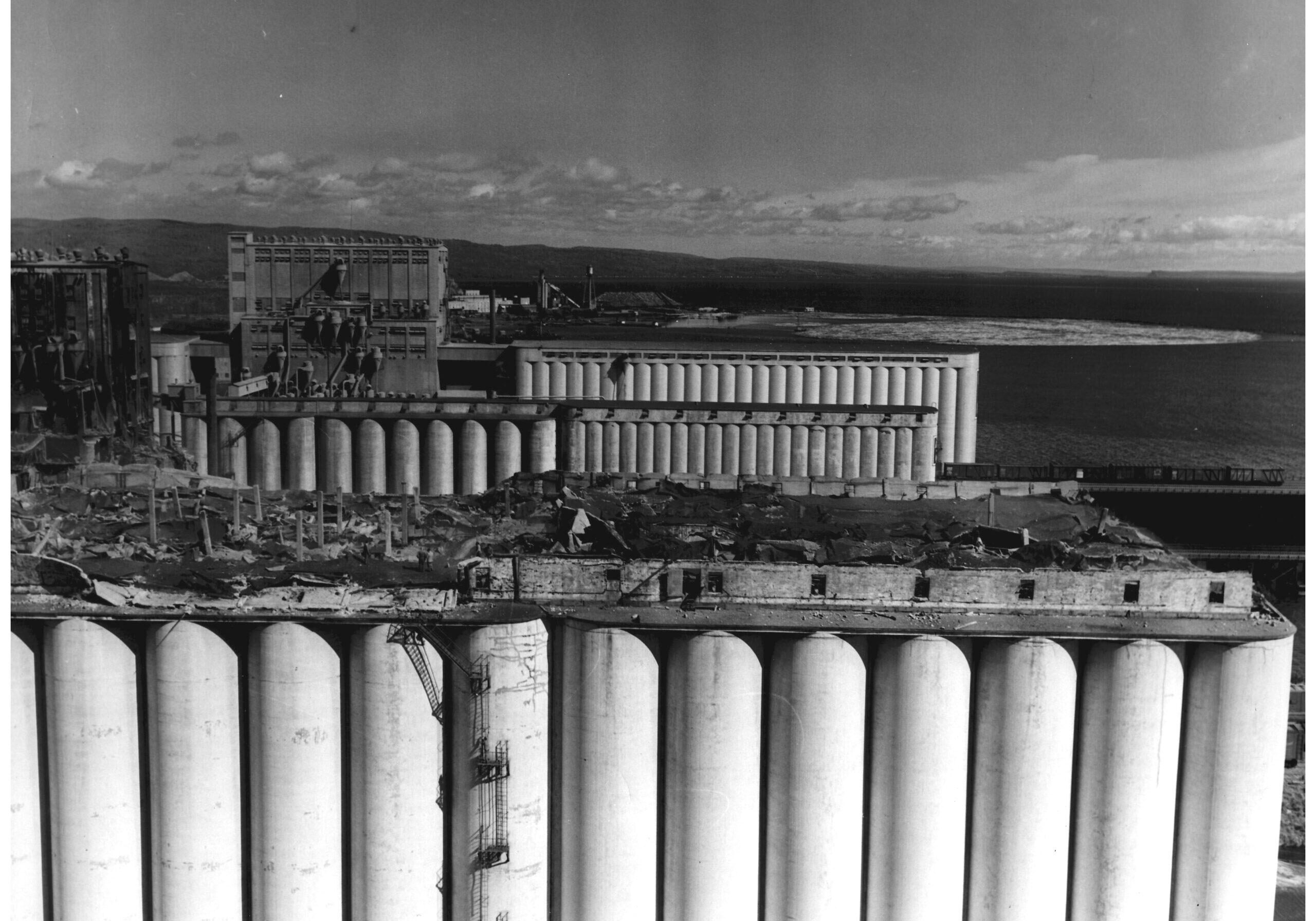
A view of the damaged annex floor above the storage bins after the 1952 explosion. Alberta Pool 9 and UGG A are visible in the background.
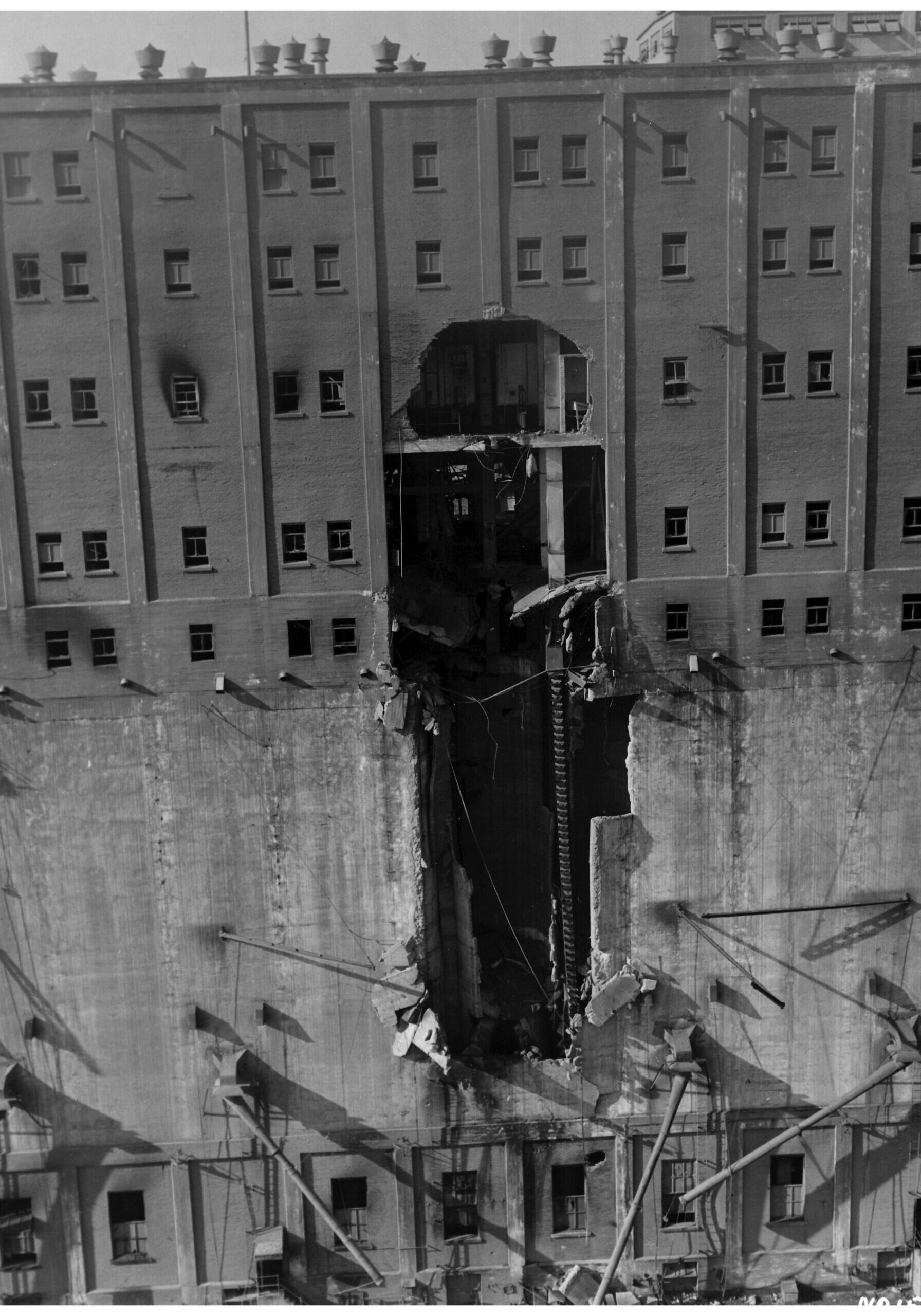
A close-up view of the blast hole in Pool 4A's workhouse after the 1952 explosion.
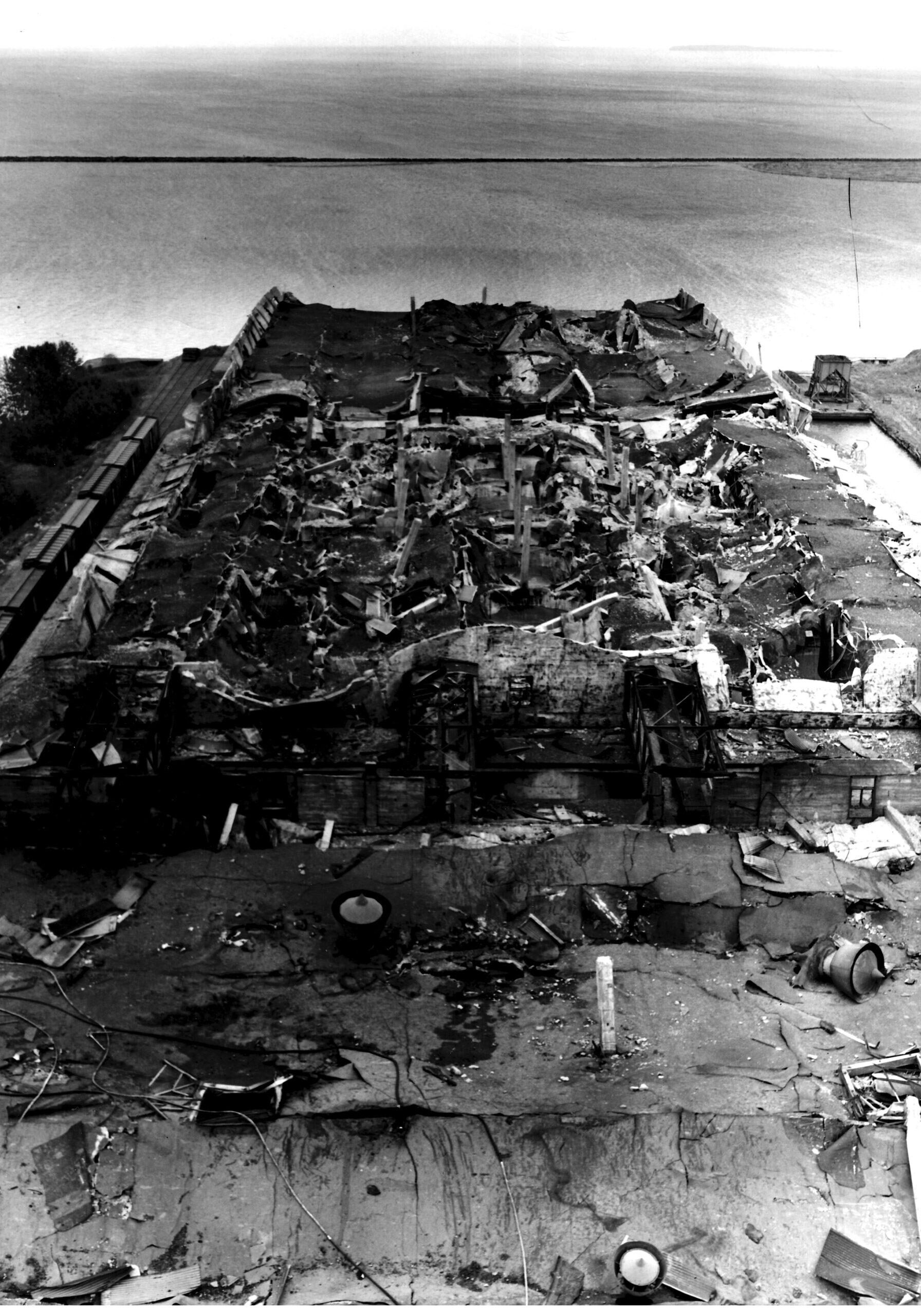
Another angle of the damaged Pool 4A annex floor after the 1952 explosion.
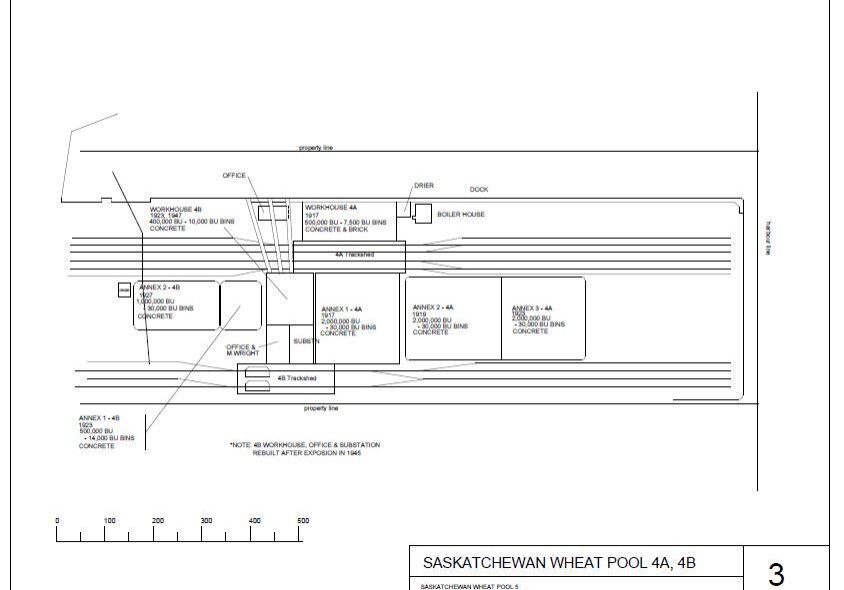
An engineering plan of Pool 4A and 4B made by CD Howe Company.
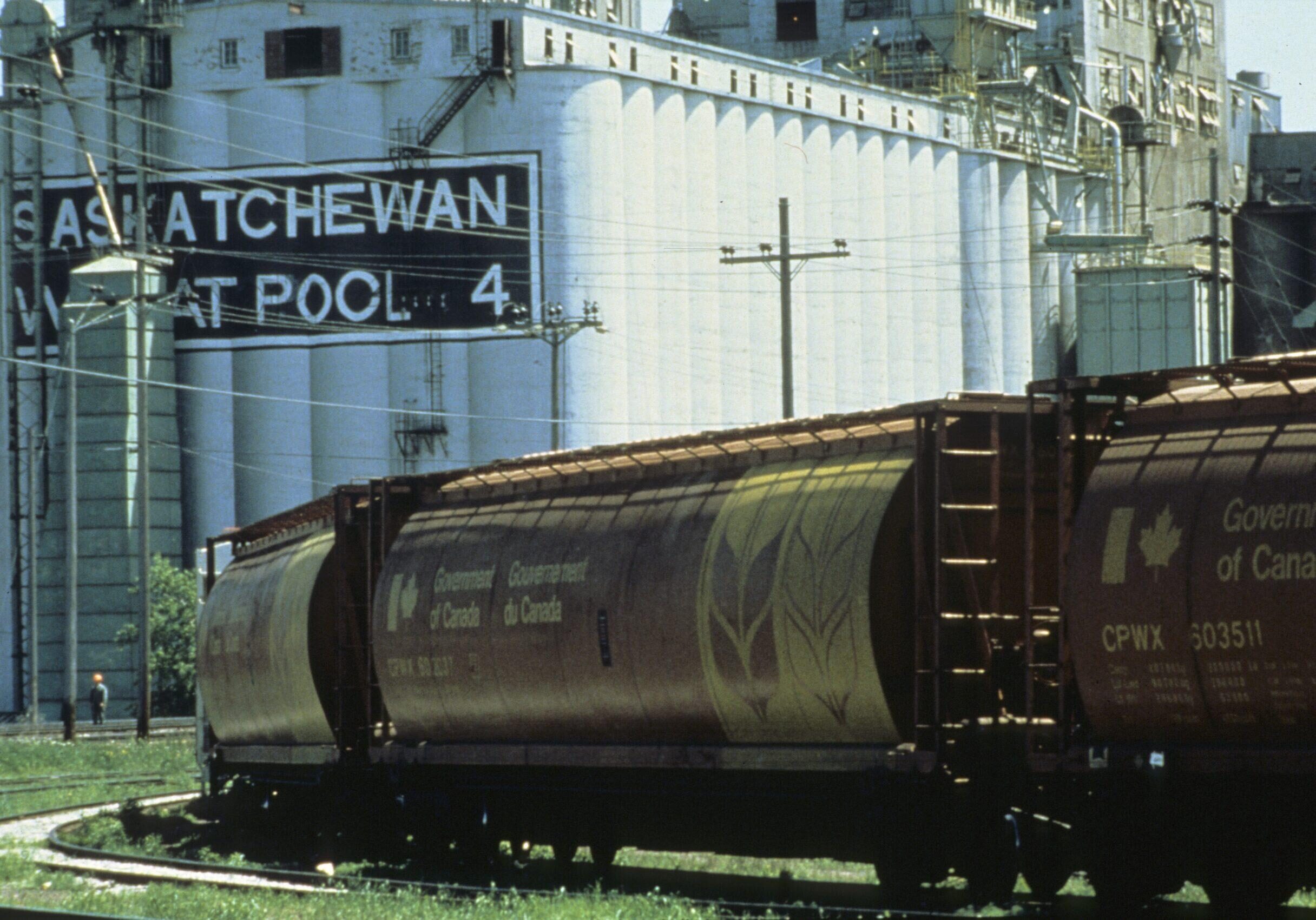
A close up view of grain-filled tank cars arriving at Pool 4. Photo from the Paterson archives.
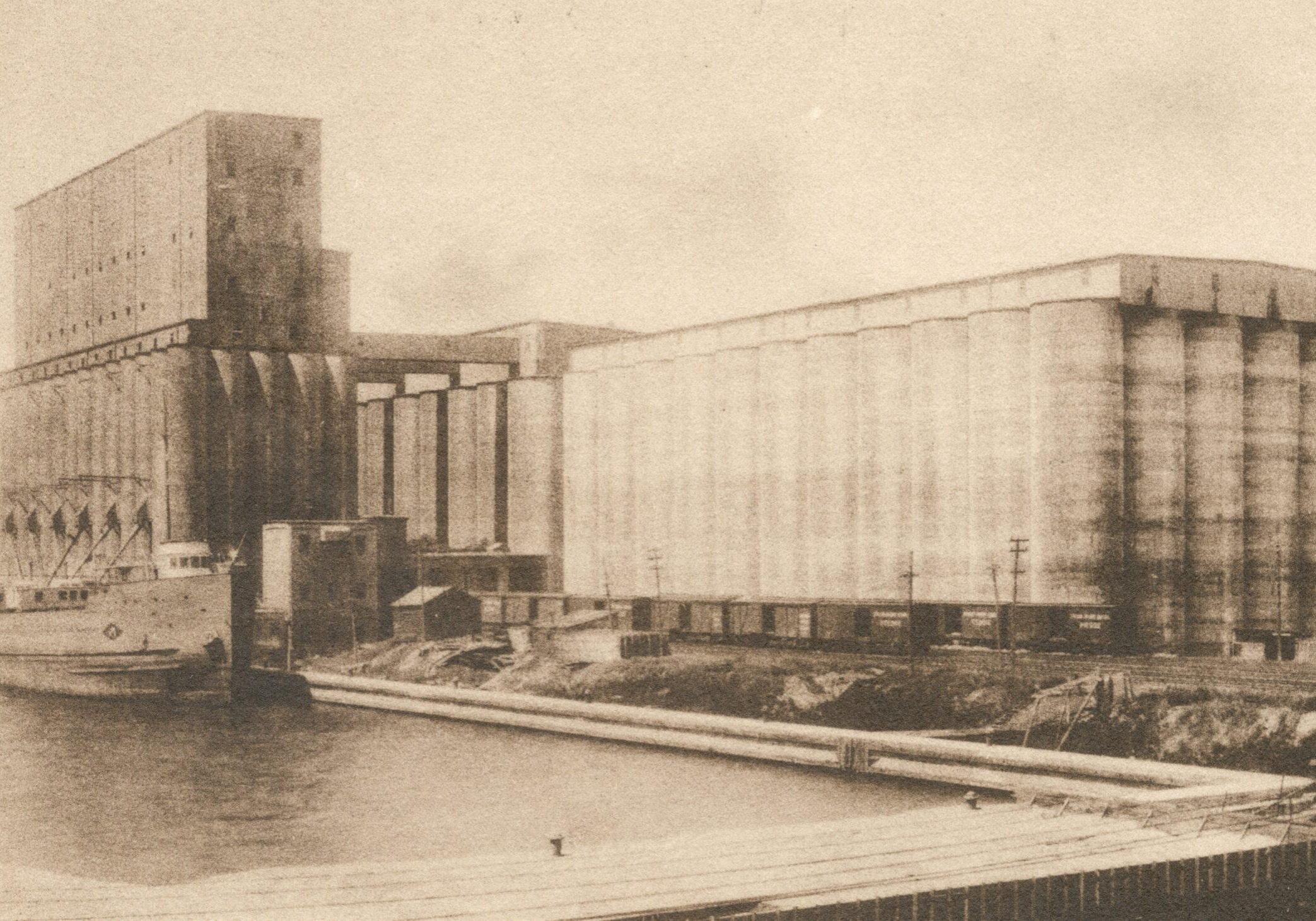
A view from the slip of Pool 4A. Photo from the Paterson archives.